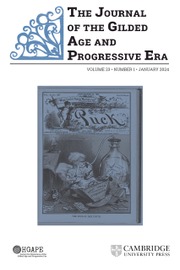Fresh air once seemed to be the solution for many urban problems. A small park, airshafts in tenement buildings, or even a program to bring city children outdoors held the power to change everything from morality to mortality. Those nineteenth-century ideals continue to ring true today, albeit with modern twists, as environmental justice campaigns push for equal access to public green spaces, or when we recall meeting with friends outdoors during COVID-19 surges. In her concise and delightfully readable book The Lung Block: Plagues, Parks, and Power in Progressive-Era New York, Adrienne deNoyelles shows the many ways that Progressive Era reformers used fresh air as a blunt instrument to solve problems, sometimes against the best interests of those meant to be breathing it.
The Lung Block, by design, is a microhistory, but its ambitions and achievements are anything but small. By delving deep into the history of a singular block bound by Cherry, Catherine, Hamilton, and Market Streets in Manhattan’s Lower East Side, deNoyelles is able to investigate the specific backgrounds and ideologies of the Progressive Era medical researchers, social workers, journalists, politicians, and priests central to the story. In doing so, scholars can more fully track how these people came to understand (and sometimes misunderstand) the immigrant poor who lived there. This specific case study becomes a powerful tale of Progressive Era failures, the changing medical and social understandings of tuberculosis, and the ways New York City reckoned with immigration and housing crises.
To make sense of the rise and fall of the park that was meant to replace the Lung Block, deNoyelles guides readers through the varied ways people conceived of tenement neighborhoods and disease. The New York-based bacteriologist Herman Biggs, for instance, mapped incidents of tuberculosis, forging a powerful visual connection between tenements and illness. Housing reformers sought to regulate new constructions, retrofit old ones, and destroy others to create what they called breathing spaces. Muckrakers and social workers transformed statistics into narratives about immigrants that were alternately sympathetic or scolding. Meanwhile, local priests and politicians, better attuned to the residents’ needs, pushed back against these caricatures. Throughout the book, as she explores the different perspectives of those deciding the fate of the block, deNoyelles is particularly alert to the ways that data was gathered, skewed, and analyzed. The author reminds readers that what may appear inarguable or even timeless is contested and always exists within its deep historical context.
deNoyelles uses brief biographies of individuals with a stake in transforming the Lung Block to show the reformers’ idiosyncrasies and how their personal backgrounds and professional situations shaped the way they thought of immigrants, poverty, and blight. Lilian Brandt, a social worker who moved to New York City just as her field was professionalizing, created a report on tuberculosis that tied it to working-class immigrants and African American populations, yet based it on wobbly data that reinforced Brandt’s deeply held assumptions. deNoyelles does a particularly good job laying out Brandt’s context—from her education and upbringing to her precarious position as an early-career social worker trying to gain legitimacy as a woman working among men—to make sense of her choices. These biographies compellingly humanize the narrative and make these people three dimensional, but they are also part of deNoyelle’s argument, showing how when historians have painted the Progressive Era in broad strokes they have missed the nuanced individual ways that people of all sorts shaped the direction these efforts took. Microhistories, in other words, allow us to focus more tightly on the contingencies involved.
deNoyelles is a particularly talented storyteller who brings the block to life. More than that, she gets right to the marrow of the story with powerfully argued and concise sentences, such as when she described how the muckraker Ernest Poole’s “vivid portrayals of the poor would continue bridging the warm sympathy of the insider with the voyeuristic curiosity of the outsider” (68). This is a wonderfully assignable book that could work well in courses on urban history, history of medicine, and public health. It pairs well with scholars looking at fresh air, reformers, the working class, and parks, scholars such as Mars Plater, Julia Guarneri, and Melanie Kiechle.
Historians of mid-twentieth-century America will also find much of relevance in The Lung Block, as this story serves as a wonderful prologue for scholarship on urban renewal. Postwar city planners described blight as an urban disease, and the roots of that language can be found in this earlier period, when new medical understandings of bacteria and social science statistics intertwined to pathologize tenement buildings, making the structures themselves seem irredeemably contaminated with germs.
This book changed the way I think about the small parks movement in late nineteenth-century New York. As someone who has written about the earlier city parks, where environmental justice and widespread access was barely a consideration for politicians and landscape designers, I imagined the small parks movement of the latter part of the century to be a step toward more equitable consideration for a wider swath of New Yorkers. In some ways it was, but by working on such a focused level with one singular tenement block slated to be replaced with a park, deNoyelles shows that it was not a clear benefit for everyone. This book, in turn, gives deeper historical context for modern situations where communities push back against innovations like bike lanes, street trees, or community gardens, baffling city politicians who think they are helping to make neighborhoods healthier and more sustainable. The threat of displacement and gentrification is never far off and, as deNoyelles clearly shows in this book, that connection is often clearest for those most threatened.


